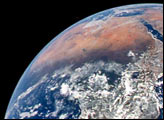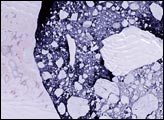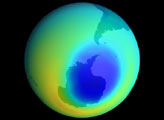Syllabus contents:
Coupled Atmosphere - Ocean Interactions



Syllabus
1. The zonally averaged circulation of the atmosphere
(a) Angular momentum, geometric and energy constraints
(b) The role of atmospheric eddies
2. The Ocean Circulation: an inevitable fallout
(a) Wind Driven
(b) Thermohaline
(c) Feedback to the atmosphere: passive and active coupling
3. A zero-order look at the annual cycle of surface temperature
and circulation
(a) The annual mean
(b) Zonal asymmetry of the annual cycle:
Passive atmosphere-ocean interaction and land-sea contrasts
(c) Zonal asymmetry of the annual cycle: active atmosphere-ocean
interaction:
Bjerknes feedback in the tropics ( -> teleconnections)
The thermohaline circulation and the thermocline
(d) Zonal asymmetry of the annual cycle in the midlatitudes:
the relative importance of Land-Sea contrast, Atmospheric
and Oceanic Heat transport for midlatitude climate.
4. ENSO: the one clear example of active atmosphere-ocean interaction
(a) Observations of ENSO
(b) Overview of atmospheric response to changes in tropical SST
(c) Overview of ocean response to changes in tropic wind forcing
(d) The Coupled Response and the ENSO mode
5. The hypotheses for the Low Frequency Variability of ENSO
(a) Stochastic; Exotic; Anthropogenic
(b) The paleo record of ENSO
7. Midlatitude vs. Tropical Coupling: fundamental differences
8. Basic Effects of coupling in the Midlatitudes
(a) Observations
(b) Reduced thermal damping and re-emergence
(c) Implications for interpreting AMIP experiments
9. The Atmospheric Response to Ocean Induced Forcing in the
Midlatitudes
(a) SST vs. heat flux forcing
(b) The atmospheric response to midlatitudes sea surface temperature anomalies
(c) Stationary and transient response
10. Decadal Variability and Midlatitude Atmosphere-Ocean Interactions:
Gyre and Intergyre Ocean Circulation and Hypothesized Feedbacks to the Atmosphere.
(a) Ocean midlatitude gyre: intrinsic and forced variability
(b) The Latif-Barnett and the gyre-intergyre hypotheses for decadal
variability in the Pacific and Atlantic, respectively.
You should
have had some background experience in atmospheric or ocean dynamics.
Please call or email if you have questions.
I am working on it, but it is likely that
we will have assigned readings, some assignments and a research project/term paper.
Participation in Lectures 10%
Lectures 10% each None
6. Teleconnections to midlatitudes
Research project/Term paper
up to 80%
Last
Updated:
03/13/2001